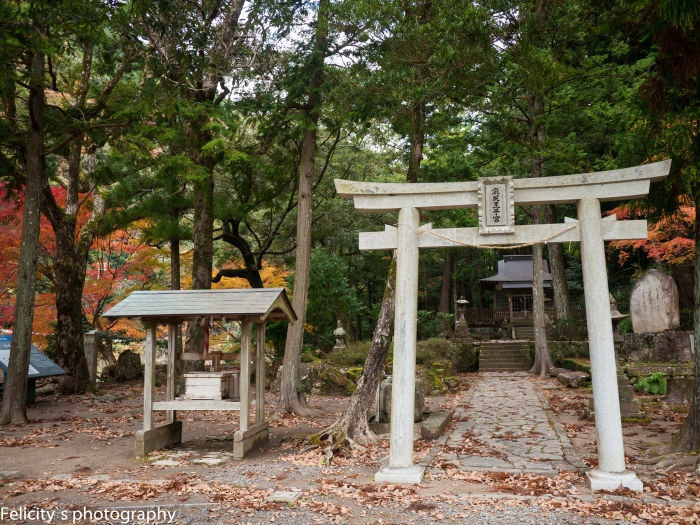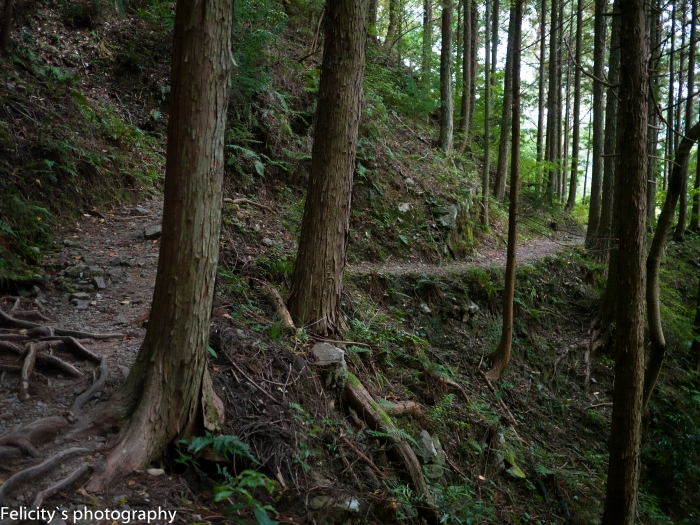Telling people you want to walk the Kumano Kodo receives a variety of responses. Veterans look at you in sympathy, enthusiasts begin to plan coming with you on your hike, and a large percentage ask, “Kuma-whatwherenow?”
The Kumano Kodo (熊野古道)are ancient pilgrimage routes, dotted with shrines and ruins, that wind through Wakayama prefecture. In 2004, they became the first trails to become UNESCO World Heritage listed, for the “monuments and sites that… are a unique fusion between Shintoism and Buddhism. ”
Though people have been walking the Kumano Kodo since the 10th century, many of the trails had become disused and lost in the mountainous terrain. With the publicity from UNESCO renewing interest however, a lot of work was put into restoring the routes, adding signage (including the helpful “THIS IS NOT KUMANO KODO” signs), and providing a lot of information for potential hikers.
For a country with such a large, aging population, it’s hard to imagine Japan having areas of rugged wilderness large enough for multi-day hikes, or that hordes of people each year would be willing to walk it. Hiking is a serious hobby here however, and those wanting to book into trail-side ryokan (Japanese inns) should book well in advance.
A friend and I decided on walking the Nakahechi (yellow) route, from Takajiri-oji to Hongu-Taisha in late November, so to catch the best of the season’s autumn colours. After walking 40 odd kilometres over 2 days, we also factored in time at Yunomine Onsen (hotspring) to soothe our abused muscles.
When my friend became the unwilling host to a flu virus, the plan scaled down to a half-day, walk-up-and-back, between Takajiri-oji and Kumano Takahara jinja with my husband. As the route rises 200 metres in elevation over the first kilometre of walking, we still got to experience the exertion and lack of breath of a longer Kumano Kodo hike.
We stopped at a cave called Tainai-kuguri, also called the Test of Faith as pilgrims are invited to squeeze through a tiny hole in the rocks for good luck, and to ensure an ‘easy birth’. Always willing to sign up to something that purports less agony in labour, I pulled myself through the gap. For added luck, my husband, despite his slight claustrophobia and broad shoulders, managed to squeeze through too.
A nearby spot, Chichi-iwa rock, also has an associated baby myth, and a little further along the trail we passed a ‘Couple Buddha’ statues (夫婦お地蔵), in cute, heart patterned aprons. I like the emphasis on practical matters, even while on pilgrimage.

Dressed in their super cute aprons, these ojizou statues listen to the prayers of passing couples (some of whom will need them answered after walking days with their partner).
The latter part of the walk was a lot smoother than the first steep climb, and we hit a good walking rhythm, much warmer for the exertion. We had come too late for the peak autumn colours, and most of the leaves were already on the ground. A few people joined us on the trail, though far less than the crowds of summer. It wasn’t too long until we left the forest for the road approaching Takahara village and shirine.

A view of Takahara shrine from the side, as its dwarfed by a massive, ancient Kusonoki (camphor) tree.
The size of the trees around and behind the shrine were astounding, the product of two thousand or so years of unstopped growth. One of the trees had branches fallen away from it, dropped by their own giant weight.
Had we continued after Takahara for another 8 kms and 300 metre rise and fall of elevation over the mountain, we would have eventually made it to see the Gyuba-doji statue. Instead, we took the highway, and walked a much shorter distance to visit it. Carved in the Meiji era, the statue represents an abdicated emperor called Kazan, doing the pilgrimage seated on a horse and cow. Unfortunately, some idiot stole the original head a few years ago, though with age, it’s hard to notice the replacement now.
Though disappointed to walk only a short amount of the original plan, I enjoyed both the exertion and the atmosphere of Kumano Kodo. While I have seen many of the key places along the route, I have, like UNESCO recognised the value of the the route itself. To travel along a millenia old road, surrounded by dense, heavy forest, passing the ruins of recently rediscovered shrines and, by climbing through a rock, potentially ensure a smooth delivery.
I can’t wait to get the hiking shoes out again.












great pictures and informative text. thank you for sharing this.
LikeLike
Thanks for your comment ^^
LikeLike
Can you recommend any good hiking books that helped you plan your trip?
LikeLike
Hi Andrea, I used online resources like http://www.tb-kumano.jp/en/kumano-kodo/suggested-walks/ and http://www.tb-kumano.jp/en/kumano-kodo/suggested-walks/
LikeLike
That cave is freaky! It’s the kind of cave that creepy Japanese girls with long hair and white dresses crawl out from.
LikeLike
Pfft, that’s every cave in Japan. 😛
I don’t know why but there’s a thing with ‘crawling through holes = good luck’ in Japan. ><
LikeLike
I think it’s probably something to do with vaginas hahaha!
LikeLike
Drew, soon-to-be-father, bringing the classy comments to my blog 😛
LikeLike
I gotta get all the crass out of my system before Beanie is born!
LikeLike
BTW, I just got reminded of a funny anecdote from my old workplace. We were designing this portal for Transformers 3, and Michael Bay said that Steven Spielberg insisted that it should look like a “birthing hole”. Those were the exact words used, and people were tossing the term “birthing hole” around a bit after that.
LikeLike
Dude, that’s cool and hilarious. SS is either really uncomfortable with the word “vagina” or he just really didn’t think about how ‘birthing hole’ might sound 😛
LikeLike
Fantastic blog post! Loving the photos as well. It’s been a few months since we returned from our amazing time in Japan, so I’m now reliving memories through other people’s blogs! We did quite a few hikes while in Japan (those up at Daisetsuzan and down in Yakushima were our favourites!), but unfortunately didn’t get a chance to try Kumano Kodo. If you’re interested, I wrote up some notes on some of the hikes we did around Kamakura and Nikko. You can find them at http://strikis.smugmug.com/Hiking. Over the next week or so I’m hoping to post up a few more on the ones that we did around Sounkyo in particular, and then I’ll do the two from Yakushima.
Cheers!
Andrew.
LikeLike
I really love this post and the photo’s are amazing. Thank you for giving me another place to visit in Japan. I’m so happy I found your blog! 😀
LikeLike
I do love Kumano!
LikeLike
An excellent post: superb text and very good photos. This is obviously a remarkable walk. I am glad you like “In search of unusual destinations”. Phil.
LikeLike
Thanks Phil, I really enjoyed your blog as well. It’s always great to get an idea of fun places/things to do in other countries for when you go there ^^
LikeLike
Pingback: Top 10 Awesome Experiences: Riding Japan’s Largest Lake | Where Next Japan
Pingback: Riding Japan’s Largest Lake | Felicity Tillack's Blog